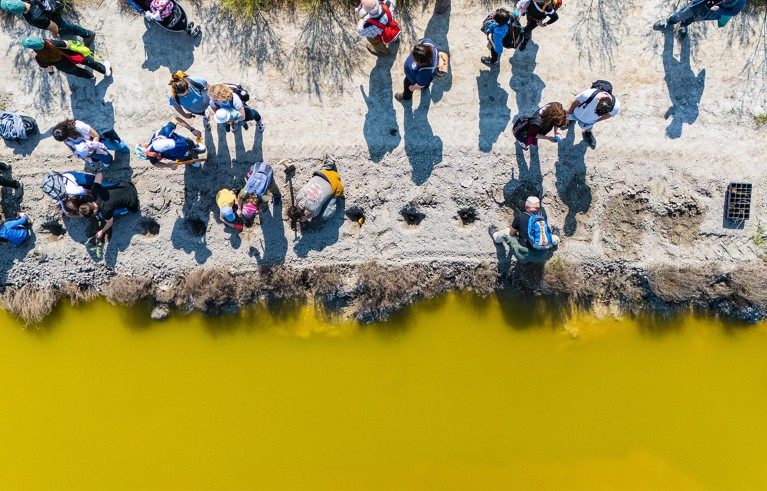Positive Tipping Points: How to Fix the Climate Crisis Tim Lenton Oxford Univ. Press (2025)
Earth-systems scientist Tim Lenton has long been emphasizing the importance of ‘tipping points’ for climate change. In a seminal paper published in 2008, he and his co-authors identified several elements of Earth’s climate system that might shift to a different state irreversibly once physical thresholds are crossed (T. M. Lenton et al. Proc. Natl Acad. Sci. USA 105, 1786–1793; 2008). For example, the Greenland ice sheet, the Amazon rainforest and circulation patterns in the Atlantic Ocean could change suddenly as the world warms.
The race to uncover snow’s many mysteries before it disappears forever
Breaches of climate tipping points are a reason for great concern and warrant rapid reductions in greenhouse-gas emissions. Yet some types of tipping point could instead help to slow down climate change. Social ones, for example, could accelerate the transition to climate neutrality. Policies that have helped to reduce the cost of solar panels, wind turbines and batteries, for example, have encouraged consumers and companies to use electric and renewable-energy sources. These trends are unlikely to be reversed even if such policies are revoked.
In Positive Tipping Points, Lenton takes a closer look at these social forces and discusses how they can be harnessed to avoid further drastic climate change. His engaging and thought-provoking discussion of how individuals can bring about positive tipping points and contribute to climate action is based on state-of-the-art research and packed with useful facts and figures. It is a breath of fresh air at a time when people are increasingly prone to feelings of ‘climate doom’, the idea that a climate catastrophe is unavoidable.
Big changes
The first part of the book highlights that changes in the climate system and society are often non-linear and can occur rapidly. For systems with self-reinforcing feedback loops, a small perturbation might be enough to tip the climate system from one equilibrium state to another. For example, higher temperatures accelerate the melting of sea ice, reducing the amount of solar radiation that is reflected back into space, thus triggering further warming.
Past tipping events include the transition, roughly 12,000 years ago, from the last ice age to the current Holocene interglacial period. Such drastic changes in environmental conditions had implications for human societies, too. The end of that big freeze enabled people to switch from foraging to farming as their main means of food production.
Other wholesale cultural shifts might be expected in a warmer world. If humans are forced to live outside the climatic niche in which our societies evolved, social stability might be threatened. But other positive tipping points could emerge that work in favour of climate-change mitigation.

People in Venice, Italy, plant trees to protect crucial salt-marsh ecosystems.Credit: Simone Padovani/Getty
The second part of Lenton’s book discusses how positive tipping points can help to avert a climate catastrophe. He includes numerous examples of how actions taken by small groups of people have resulted in large-scale social change. For example, Lenton describes how his aunt Lilian’s fight for women’s suffrage helped to change social norms, and how a small number of climate activists, such as Greta Thunberg, have sparked a global movement.
The author argues that the key to pushing social change towards a climate-friendly economy lies in feedback loops — progress in one area increases the probability of improvements in others. Social activism, alternative forms of democracy, technological progress and government policies could reinforce each other, allowing societies to overcome the current state of ‘carbon lock-in’ by reducing their reliance on fossil fuels.